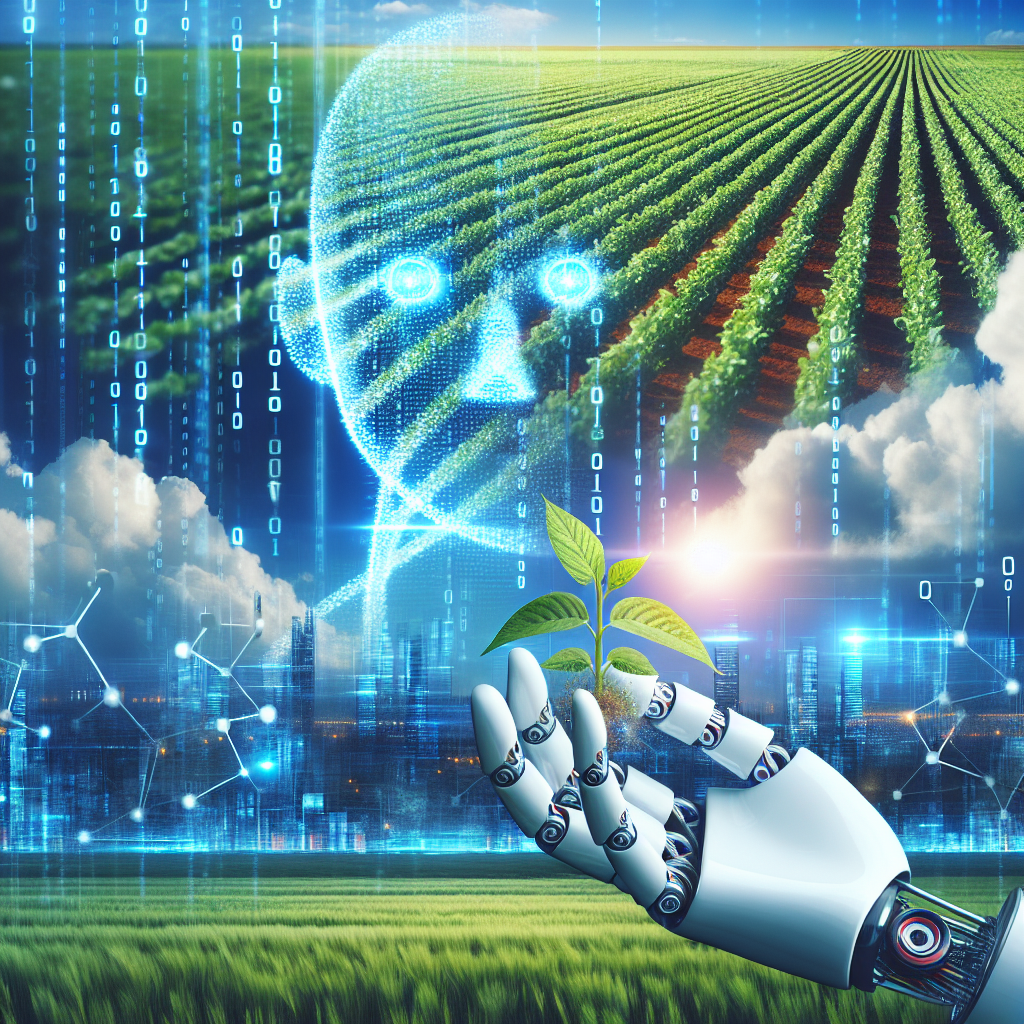The Potential of AI in Plant Breeding and Genetics
Artificial intelligence (AI) has revolutionized many industries, from healthcare to finance to transportation. Now, AI is poised to transform the field of plant breeding and genetics. With the help of AI, plant breeders can develop new varieties of crops faster and more efficiently, ultimately helping to improve food security and sustainability.
AI is particularly well-suited for plant breeding and genetics because it can process vast amounts of data quickly and accurately. This data can come from a variety of sources, including genomic sequencing, field trials, and environmental sensors. By analyzing this data, AI algorithms can identify patterns and correlations that would be difficult or impossible for humans to detect.
One of the key ways that AI is being used in plant breeding is through genomic selection. Genomic selection involves analyzing the DNA of plants to identify genetic markers that are associated with desirable traits, such as disease resistance or high yield. By using AI algorithms to analyze this data, breeders can predict which plants are most likely to have these traits without having to wait for them to grow and be evaluated in the field.
AI can also help breeders to develop new varieties of crops that are better suited to changing environmental conditions. Climate change is causing shifts in temperature and precipitation patterns, which can impact the productivity of crops. By using AI to analyze data on how different varieties of crops respond to different environmental conditions, breeders can develop new varieties that are more resilient to these changes.
In addition to genomic selection, AI can also be used to optimize the breeding process itself. For example, AI algorithms can help breeders to design more efficient breeding programs by identifying the best crosses to make and the most promising lines to advance. This can help breeders to develop new varieties of crops faster and with fewer resources.
Overall, the potential of AI in plant breeding and genetics is vast. By harnessing the power of AI, breeders can develop new varieties of crops that are more productive, resilient, and sustainable. This can help to ensure food security for a growing global population and mitigate the impacts of climate change on agriculture.
FAQs
1. How does AI differ from traditional plant breeding methods?
AI differs from traditional plant breeding methods in that it can process vast amounts of data quickly and accurately. Traditional plant breeding methods rely on trial and error, with breeders making crosses and evaluating the resulting plants in the field. AI, on the other hand, can analyze genomic data to predict which plants are most likely to have desirable traits without having to wait for them to grow.
2. How can AI help breeders to develop new varieties of crops that are more resilient to climate change?
AI can help breeders to develop new varieties of crops that are more resilient to climate change by analyzing data on how different varieties of crops respond to different environmental conditions. By identifying genetic markers that are associated with resilience to changing environmental conditions, breeders can develop new varieties that are better suited to the challenges posed by climate change.
3. What are some challenges to implementing AI in plant breeding and genetics?
One of the challenges to implementing AI in plant breeding and genetics is the need for high-quality data. AI algorithms rely on large amounts of data to make accurate predictions, so breeders need access to high-quality genomic data, field trial data, and environmental data in order to fully harness the power of AI. Additionally, there may be concerns about the privacy and security of this data, which will need to be addressed in order to ensure widespread adoption of AI in plant breeding.
4. What are some examples of AI being used in plant breeding and genetics?
One example of AI being used in plant breeding is in genomic selection, where AI algorithms analyze DNA data to predict which plants are most likely to have desirable traits. Another example is in optimizing breeding programs, where AI algorithms help breeders to design more efficient breeding programs by identifying the best crosses to make and the most promising lines to advance.
5. What are the potential benefits of using AI in plant breeding and genetics?
The potential benefits of using AI in plant breeding and genetics are numerous. By harnessing the power of AI, breeders can develop new varieties of crops that are more productive, resilient, and sustainable. This can help to ensure food security for a growing global population and mitigate the impacts of climate change on agriculture. Additionally, AI can help breeders to optimize the breeding process itself, making it faster and more efficient.

